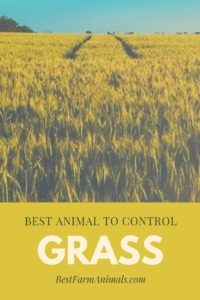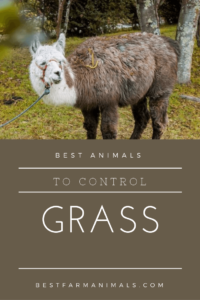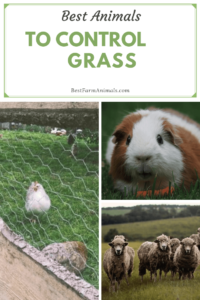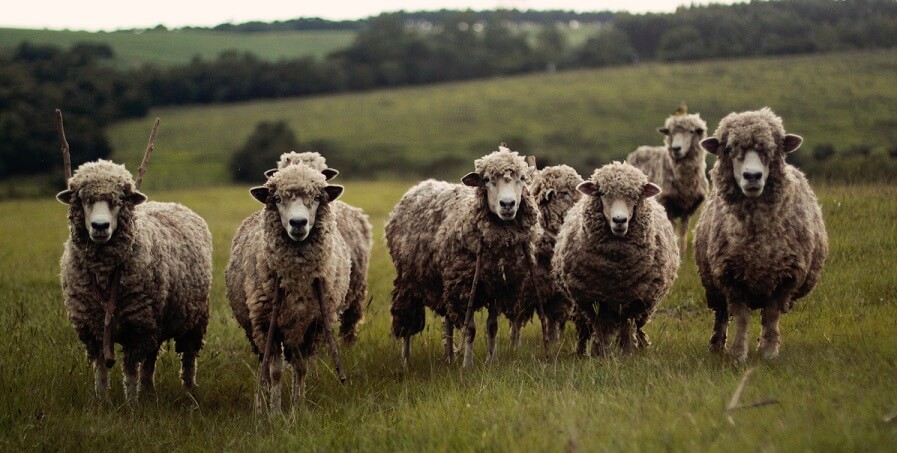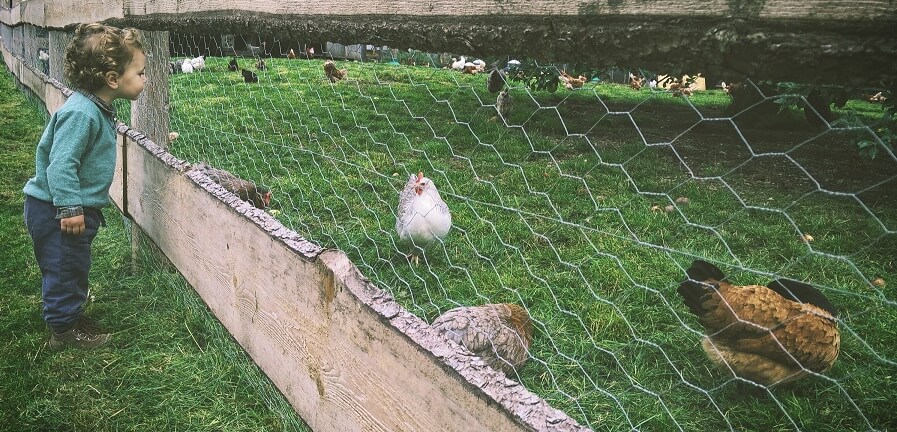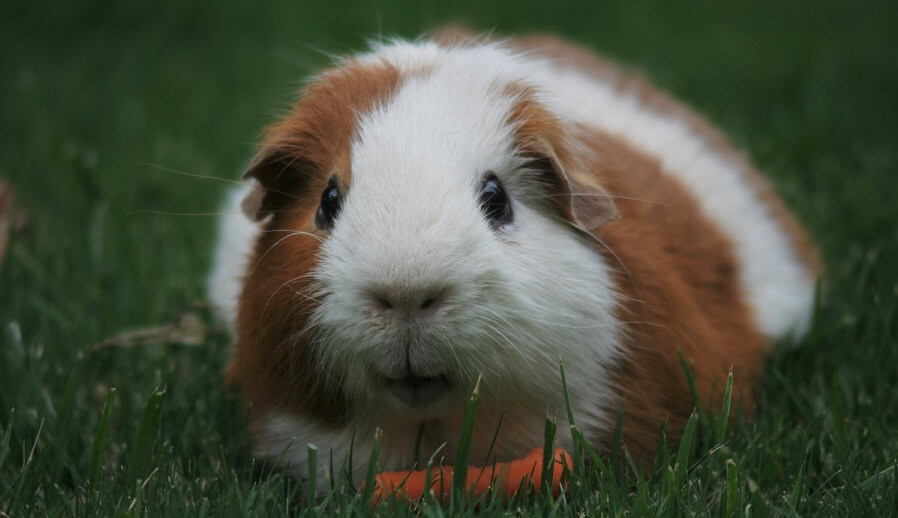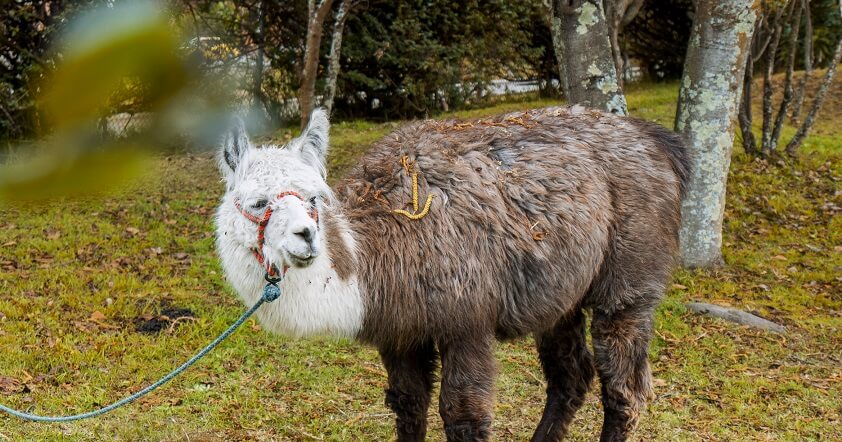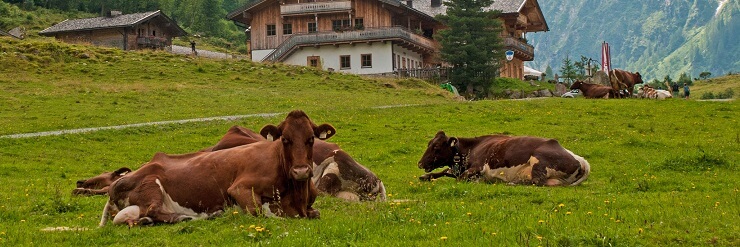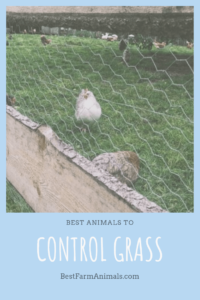Five years ago, I moved into a house with several acres, including at least ½ acre of lawn. I wondered what the best animals are to control grass. So I checked and found five animals that are great at controlling grass and weeds. Then I put them to the test. Here are the results.
What Are The Best Animals To Control Grass? The best animals to control grass include sheep, chickens, guinea pigs, llamas, goats, and cows. Of course, the best animal for your lawn will depend on several factors including whether you are planning to groom a yard lawn or keep a pasture in check. It will also depend on the kind of infrastructure and fencing you have or can install on your property. If you plan to walk or play on your lawn, then you will want different animals than if you are trying to keep a pasture under control. Let’s explore the benefits of grass-eating animals.
Goats Are Easy Keepers for Grass and Weed Control
My favorite animal for grass and weed control are a couple of goats. But, you should know that even though goats have the greatest reputation as grass munchers, but they don’t prefer grass. Goats prefer weeds and woody plants. As a result, goats can be used to keep a lawn trim, but you will need to keep them well tied up. Goats are also expert escape artists so this will be more difficult than with other animals.
Goats are often used not as much for grass control as weed control. They are experts at munching and completely consuming weeds and bushes. As a result, goats are ideal for controlling land that is not manicured or landscaped. They can clear land of noxious weeds and get it ready for landscaping.
If you plan to use goats to keep your lawn trimmed, then be aware that goats are not even eaters. They prefer to graze. Your lawn will not stay evenly cut. You will also want to securely keep them away from trees, bushes, and flowers and they will seek these types of vegetation over grass.
Goats provide several additional benefits, including many mild varieties that are friendlier for children. They can provide milk and be used for wool fibers.
- Expert escape artists
- Prefer weeds, bushes and woody plants over grass
- Have vivacious appetites so they will consume large amounts of vegetation
- Used by Google to control their extensive landscaping
- Best for weed control
- Don’t tie goats up near trees or bushes as they will strip the leaves before eating your grass.
Goats have become my favorite animal for grass and weed control. I have found that staking my goats in the same area with T-posts is super easy. Don’t make the ropes long enough for them to cross ropes. Ropes and dog collars work better than halters, which can suffocate them. But, you will need fences if your goats are dehorned. I don’t dehorn my goats unless they are for my kid’s 4H program. The horns make it much easier to handle them. Plus, I can leave the collars on super loose and it won’t come off because the horns will catch the collar. You will also want to keep the rope short enough that they can’t reach flowers or garden plants.
Sheep
Sheep are popular for lawn-mowing because they can be moved around and will thoroughly eat the grass. I like sheep as a grass control animal because they are low maintenance. They can control a large area of grass. Sheep are social so you will want to have at least 2 sheep to get the job done.
Sheep do such a good job of keeping the lawn trimmed that one Pennsylvania school district saved $15,000 a year on lawn maintenance by employing a herd of sheep to keep the grass trimmed! Other schools in Ohio have turned to a combination of sheep and goats to keep their grounds trim.
They are calm and friendly so you won’t have many issues keeping sheep. Their waste (poo) is generally dry so they are easier for lawn use because you can keep sheep on one part of the lawn and move them. The part that isn’t being used won’t cause a mess as you walk across or the kids play.
Sheep do need to be sheared one a year (I shear in April or early May), but otherwise will be an easy animal to keep. Other benefits of sheep include the ability to raise them for their wool, milking, or meat.
- Docile and friendly
- Low maintenance
- Expert grazers- will keep a large area grazed
- Dry stool
Sheep need additional nutrients and minerals than your grass or pasture will provide. Make sure you provide a mineral block and always give them access to water. Another consideration of grazing sheep is keeping predators away. Sheep are a little more submissive to predators and will give up and die after an attack a lot easier than some of the other animals on the list.
Chickens
Chickens may not be the animal you first think of, but they have great grazing capabilities. Chickens will eat not only grass but bugs also. They will help to keep your bugs in check.
In the western states, that means keeping grasshoppers, spiders, and flies under control. In the eastern and southern states, it can mean controlling nuisance bugs such as ticks and fleas. Be aware that chickens can also be a host for ticks so it won’t be 100% effective.
The best way to control grass with chickens is to have a portable coop that can be moved. Rotate your chickens from one area to another every few days. This will help to keep your grass more evenly controlled.
Plus, chicken poop is dry and extremely good for your grass. That will help your grass to grow greener and will keep it from making a mess once it dries. You will want to allow at least one day after moving your chickens before letting kids play on the lawn to reduce indoor mess.
- Produce Eggs or Meat as a side benefit
- Natural fertilizer
- Can be moved to keep lawn evenly “mowed”
- Low maintenance
I found that chickens did the best job when I used a chicken tractor instead of free-ranging them, but it was a little inconvenient. My smaller tractor, I had to move daily, and my larger one was too heavy for me to move alone.
Guinea Pigs
Guinea pigs are small but can make a large dent in your grass. Guinea pigs eat five times its weight in grass every day. You will need a group of them as one guinea pig won’t be effective. You will need to move them around your lawn.
The downside of guinea pigs for large lawns is that you will need a lot of them to accomplish the job. They would not be practical for schools, parks or other areas of large acreage.
However, for a family lawn, guinea pigs can be a great addition because they also make fantastic pets for children.
Here’s another thing to remember. Guinea pigs don’t eat just grass so you will need to supplement their diet to keep them healthy.
Two guinea pigs should keep a 10ft square lawn neatly trimmed. If you choose to employ guinea pigs for your lawn maintenance, make sure that you have a tightly fenced area that can be moved around. Guinea pigs don’t dig but are small so they can escape a loose fence or ones with large holes.
- 10 sq feet per 2 guinea pigs will stay maintained
- More guinea pigs for larger lawns
- Need diet supplemented for good health
- Will need a tight cage to stay contained
- Great pets
Guinea pigs will not control a large area of land well. They would work best for a small lot or piece of sod.
Llama or Alpacas
Although some school districts use sheep to control their lawns, other school districts have turned to alpacas for lawn maintenance. Alpacas are different than llamas but are very similar in looks and function. Both animals will clear land very efficiently.
Llamas and alpacas can be moved around the grounds to keep the lawn well cleared. It is important to note that the animals are usually used in areas that children don’t play in. This is because of their larger size. Even though they are calm animals and don’t usually attack, they do spit. That can come as a surprise if you aren’t prepared to duck or move! They can also walk into an unaware child.
Additionally, their poop is very dry but is made of less organic materials than other animal poop. That means that it isn’t used as a fertilizer as often.
- Great grass grazers
- Not ideal for a manicured lawn where children play
- Calm animals
- Useful for burden-bearing, wool, or meat
Whether you use alpacas or llamas, you will want to make sure you provide them with nutrient and mineral supplements. You will also need to make sure that they are confined because they WILL travel.
Cows
Cows are best used for large areas of grass control, rather than lawn control. Cows are larger and will leave large deposits of poo on the lawn. This makes it unappealing for any lawns that will be used by children or for landscaping. However, they are ideal to keep pasture lawns in check and can greatly help to keep other fields in check.
Cows are intense eaters and will need at least ½ acre of land per cow. They are generally content and seldom try to escape. However, you will still need a barbed wire or hot fence to keep them in or they will simply wander away.
Cows can be dual-used for beef or as dairy cows. If you choose to use a dairy cow to control a pasture, be aware that it will require daily care to keep the milk coming.
- Will eat large quantities of grass
- Not ideal for manicured lawns
- Best for pastured grass and fields
- Low maintenance unless dairy cows are kept
- Docile animals
Related Questions
Do goats keep the grass short? Although goats can be used to “mow” grass, they are munchers not grazers. That means that the grass won’t be uniform in length and will have spots barer than others. Additionally, goats prefer many other types of vegetation than grass and so they will be a nuisance if you have bushes, flowers, or other vegetation nearby.
What Are The Best animals to clear weeds? The best weed-eaters include goats, llamas, and cows. These animals clear weeds in large quantities. Goats prefer most weeds to grass. Llamas and cows will eat both weeds and grass.
What’s the best animal to eat grass? The animal the will eat the most grass at a time is a cow. 3 cows will demolish 25,000 sq feet of grass in one day. That will take 19 goats to do the same. It would take 41 sheep to do likewise. However, if you want more even grazing with the option for manicured lawns, then sheep are best. They won’t imprint the ground with deep hoof marks like cows will in wet soil. They also won’t graze unevenly as goats will.
Related Articles
How To Raise Sheep For Wool, Milk, Meat, or Profit
How To Raise Goats: Full Guide For Beginners
10 Best Animals For Self-Sufficiency
